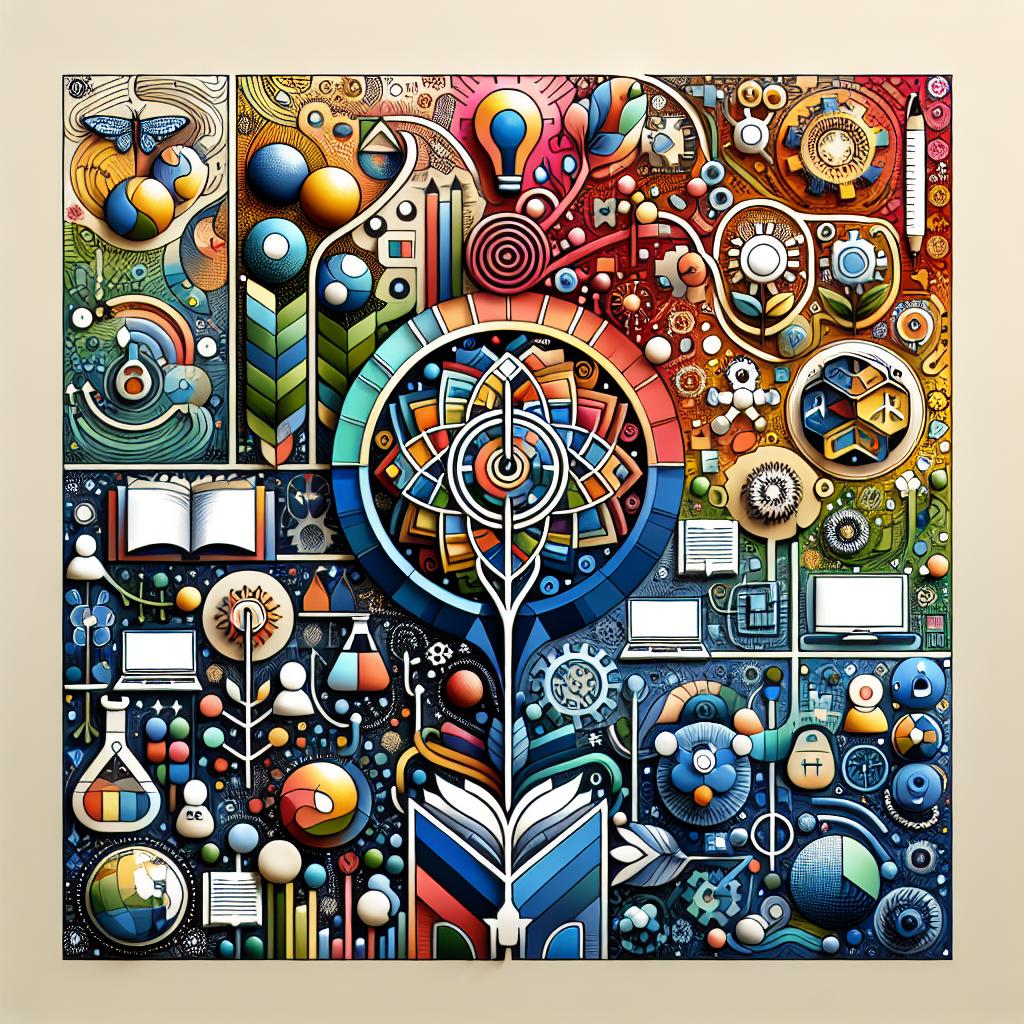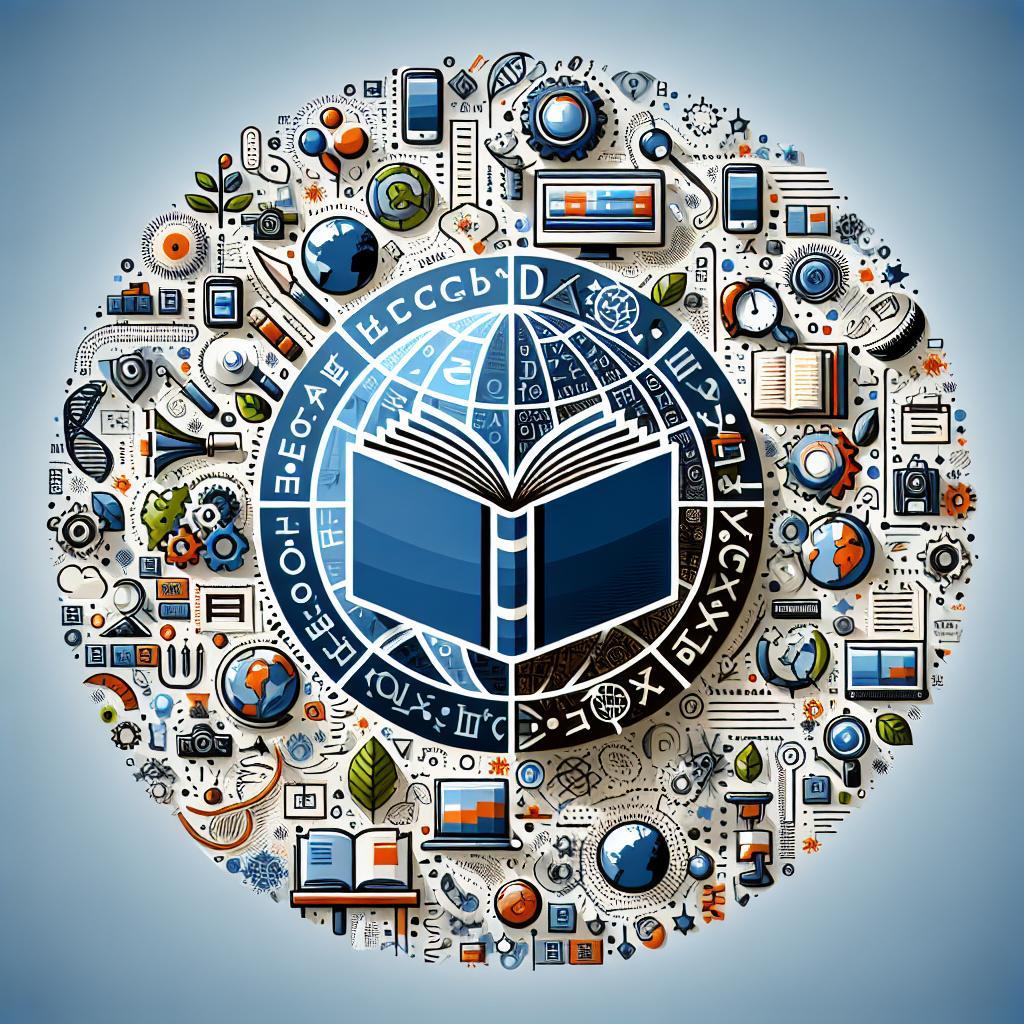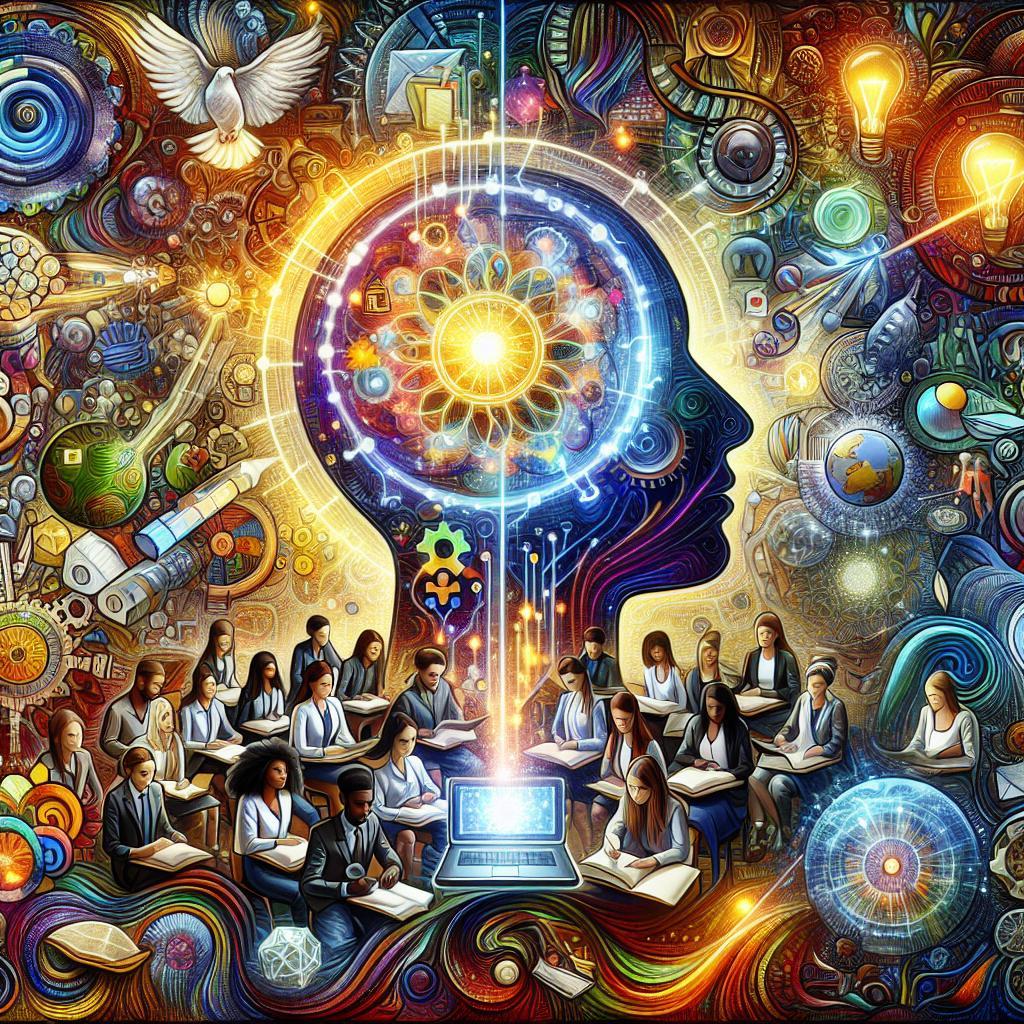Strategies for Inclusive Education

Opening the doors to a classroom filled with eager minds presents an invigorating challenge: to nurture and educate every student uniquely and equitably. As we walk through these metaphorical corridors, we tread the fine line between intention and impact, striving to create sanctuaries of learning that resonate with all. In our shared quest for knowledge lies an imperative to acknowledge differences, break down barriers, and foster environments where every learner feels valued. Welcome to “Strategies for Inclusive Education,” a compass for educators, parents, and policymakers navigating the essential journey towards an educational landscape that leaves no child behind. Here, we chart a course through proven methodologies, imaginative interventions, and compelling anecdotes, all illuminating the path to inclusion. Together, let us reimagine our classrooms—not as mere vessels of information, but as vibrant ecosystems where every student’s light can shine brightly.
Table of Contents
- Fostering a Culture of Belonging and Acceptance
- Tailoring Instructional Methods to Diverse Learning Styles
- Creating Accessible Learning Environments for All Students
- Leveraging Assistive Technology and Adaptive Tools
- Engaging Families and Communities in the Educational Process
- Ongoing Professional Development and Teacher Training
- Q&A
- The Way Forward

Fostering a Culture of Belonging and Acceptance
Creating an inclusive classroom environment goes beyond just acknowledging diversity; it involves cultivating an atmosphere where every student feels valued and respected. Teachers can adopt strategies like incorporating diverse materials in the curriculum, celebrating different cultures, and encouraging open dialogue. By mindfully choosing books, films, and other resources that represent various backgrounds, educators can help students see themselves reflected in what they learn and instill respect for differences. This, in turn, promotes a deeper understanding and empathy among classmates.
Another key approach is fostering an environment where all students have the opportunity to express themselves and participate. Teachers can implement flexible seating arrangements to encourage collaboration and interaction among students. Differentiated instruction and multi-modal teaching strategies can also cater to various learning needs and styles, ensuring no student feels left behind. Furthermore, schools can adopt peer mentoring programs to provide additional support and cultivate a sense of community. Embracing these practices helps to build a classroom that not only accepts but celebrates individuality.

Tailoring Instructional Methods to Diverse Learning Styles
Teaching strategies should reflect the diverse range of learning styles present in any classroom to create an inclusive educational environment. Educators can leverage multimodal instructional techniques to cater to the needs of visual, auditory, kinesthetic, and reading/writing learners. For visual learners, incorporating diagrams, charts, and mind maps can significantly enhance comprehension. Auditory learners benefit from lectures, discussions, and using apps that convert text to speech. Kinesthetic learners engage best through hands-on activities, role-plays, and physical manipulatives. For those who thrive on reading and writing, ample opportunities should be provided for note-taking, written assignments, and reflection journals.
Integrating technology can further accommodate diverse learning preferences. Utilizing interactive e-books, educational videos, and online quizzes can appeal to different learning modalities simultaneously. Blogs and discussion forums can support reading/writing learners, while podcasts and voice notes are invaluable for auditory learners. Digital whiteboards and simulations offer kinesthetic learners virtual hands-on experiences. The table below summarizes instructional methods tailored to each learning style:
| Learning Style | Instructional Methods |
|---|---|
| Visual | Diagrams, Charts, Mind Maps |
| Auditory | Lectures, Discussions, Text-to-Speech Apps |
| Kinesthetic | Hands-on Activities, Role-plays, Manipulatives |
| Reading/Writing | Note-taking, Written Assignments, Journals |

Creating Accessible Learning Environments for All Students
To ensure that every student has an equal opportunity to succeed, an inclusive educational environment must be established. Key strategies include customized learning plans and universal design for learning frameworks. For instance, incorporating various teaching methods such as visual aids, interactive lessons, and hands-on activities can cater to diverse learning preferences. Utilizing assistive technologies like screen readers and speech-to-text software can significantly benefit students with disabilities.
- Differentiated instruction to ensure each student’s unique needs are met
- Designing classrooms that are both physically and cognitively accessible
- Providing professional development for educators to identify and support students requiring additional help
| Resource | Purpose |
|---|---|
| Assistive Technology | Helps students with disabilities in accessing the curriculum |
| Visual Aids | Supports visual learners in grasping concepts |
| Interactive Lessons | Engages students with different learning styles |

Leveraging Assistive Technology and Adaptive Tools
Incorporating assistive technology and adaptive tools into the classroom can significantly enhance the learning experience for students with diverse needs. Whether it’s through text-to-speech software for students with reading difficulties, or speech-to-text applications for those with writing challenges, these technologies can make educational material more accessible. Additionally, interactive whiteboards and adaptive learning platforms allow for a more personalized learning experience, accommodating various learning speeds and styles. This not only fosters a more inclusive environment but also empowers students to achieve their full potential.
Adaptive tools go beyond digital solutions, encompassing physical aids such as ergonomic seating and adjustable workstations for students with physical disabilities. Simple yet impactful tools like graphic organizers can help students with organizational challenges structure their thoughts and coursework more effectively. Below, a table highlights some essential adaptive tools and their applications:
| Tool | Application |
|---|---|
| Ergonomic Seating | Provides comfort for students with physical disabilities for prolonged periods. |
| Graphic Organizers | Aids in structuring thoughts, improving organization of ideas. |
| Interactive Whiteboards | Supports engaging, dynamic lessons adaptable to individual needs. |
| Braille Keyboards | Enables visually impaired students to interact with digital content. |

Engaging Families and Communities in the Educational Process
Involving families and communities in the educational journey is essential for nurturing a more inclusive learning environment. Empowering parents and guardians with opportunities to participate in school activities fosters a sense of ownership and belonging. Some effective strategies include:
- Family workshops: Organize sessions on topics like literacy, digital skills, and co-learning strategies.
- Community partnerships: Collaborate with local businesses and organizations to provide resources and support.
- Volunteer programs: Encourage family members to contribute their skills and expertise in classrooms.
Creating a robust support network can significantly enhance the educational process. Schools can benefit from a community-understanding approach, where educators work closely with community leaders to address the specific needs of students. Here are some steps to achieve this:
| Action | Description |
|---|---|
| Community Forums | Regular meetings to discuss educational goals and challenges. |
| Cultural Events | Host events that celebrate diverse backgrounds and traditions. |
| Feedback Systems | Establish channels for families to provide input and suggestions. |

Ongoing Professional Development and Teacher Training
Educators aiming to foster an inclusive classroom environment benefit greatly from continuous professional development. It’s essential to equip teachers with effective strategies that address diverse learning needs. Professional development programs can focus on a variety of inclusive educational methods, such as Universal Design for Learning (UDL), differentiated instruction, and culturally responsive teaching. By understanding and implementing these strategies, teachers can create a classroom atmosphere where every student feels valued and supported. Workshops, online courses, and collaborative projects are practical ways to incorporate these training methods into educators’ routines.
Ongoing training also emphasizes the value of peer collaboration and feedback. Building a community of practice where teachers share experiences and solutions can significantly enhance teaching practices. Peer observation, joint lesson planning, and professional learning communities (PLCs) are particularly effective. To keep track of the various professional development activities and their impact, schools might consider using an organized approach. Below is a sample table illustrating potential professional development activities and their benefits:
| Activity | Benefit |
|---|---|
| Workshops | In-depth exploration of inclusive strategies |
| Online Courses | Flexible and self-paced learning opportunities |
| Peer Observations | Real-time insights and constructive feedback |
| PLCs | Shared experiences and collaborative problem-solving |
Q&A
Q&A: Strategies for Inclusive Education
Q: What is the primary goal of inclusive education?
A: The primary goal of inclusive education is to ensure that all students, regardless of their diverse backgrounds and abilities, have equal access to high-quality education. This involves creating a learning environment where differences are respected, and every student can participate fully and achieve their potential.
Q: Can you explain why inclusive education is important?
A: Inclusive education is important because it promotes equality and respect for all individuals. It helps dismantle barriers to learning and participation, ensuring that every student feels valued and supported. Additionally, inclusive settings prepare all students for life in a diverse society by fostering understanding, acceptance, and collaboration between people with different backgrounds and abilities.
Q: What are some effective strategies for implementing inclusive education?
A: Several effective strategies can be employed to implement inclusive education. These include:
- Differentiated Instruction: Tailoring teaching methods to address the diverse learning needs of students. This might involve offering various types of materials and activities that cater to different learning styles.
- Universal Design for Learning (UDL): Designing curriculum and learning experiences that are accessible to all students from the start. UDL involves multiple means of representation, engagement, and expression to meet the wide range of learners’ needs.
- Collaborative Teaching: Teachers and specialists working together to plan, teach, and assess students. This can include co-teaching models where general and special educators share responsibilities within the classroom.
- Positive Behavioral Interventions and Supports (PBIS): Implementing a framework that promotes positive behavior, preventing and addressing challenging behaviors in a constructive manner.
- Assistive Technology: Utilizing technology tools to support the learning of students with disabilities, such as speech-to-text programs, audiobooks, or adaptive devices.
Q: How can schools foster an inclusive culture?
A: Schools can foster an inclusive culture by:
- Leadership Commitment: School leaders must prioritize inclusivity, providing clear visions and policies that reflect the commitment to an inclusive environment.
- Professional Development: Training teachers and staff to understand and implement inclusive practices, ensuring they have the knowledge and skills to support diverse learners.
- Engaging Families and Communities: Involving families and community members in the educational process, fostering a partnership that supports student learning and well-being.
- Creating Inclusive Policies: Developing and enacting policies that address equity and provide support for all students, including anti-bullying strategies and accommodations for students with disabilities.
- Celebrating Diversity: Recognizing and valuing the unique contributions of each student, celebrating cultural and individual differences within the school community.
Q: What challenges might schools face in implementing inclusive education and how can they overcome them?
A: Schools may face several challenges in implementing inclusive education, including limited resources, lack of training, and resistance to change. To overcome these challenges, schools can:
- Seek Adequate Funding: Advocating for and securing funding for resources and training necessary for supporting inclusive practices.
- Ongoing Professional Development: Providing continuous training for teachers and staff to equip them with up-to-date strategies and tools for inclusive education.
- Building a Support Network: Creating a support system within the school and the community, including specialists, counselors, and peer support groups, to address diverse student needs.
- Emphasizing Growth Mindset: Encouraging a growth mindset among educators and students, where challenges are viewed as opportunities for learning and development.
- Inclusive Planning: Involving all stakeholders in the planning and implementation process to ensure that diverse perspectives are considered, facilitating a more inclusive environment.
By addressing these challenges thoughtfully, schools can move closer to achieving a truly inclusive educational environment where every student thrives.
The Way Forward
As we close the chapter on our exploration of strategies for inclusive education, it becomes evident that creating a learning environment that embraces diversity is not a destination but a journey. The road ahead is paved with continuous learning, empathy, and adaptability, where educators and students alike play pivotal roles in fostering an atmosphere of mutual respect and understanding. By championing these strategies, we not only enrich the tapestry of our classrooms but also lay the groundwork for a more inclusive society. Let us carry forward the spirit of inclusivity, making every step count towards a brighter, more equitable future for all.








Responses